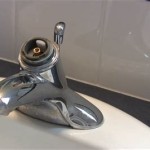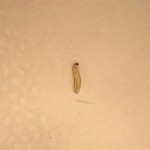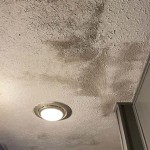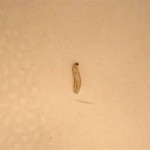How To Vent A Bathroom Fan To The Outside Wall
Effective ventilation is crucial in bathrooms to manage moisture, prevent mold growth, and eliminate unpleasant odors. A bathroom fan that is properly vented to the outside is essential for achieving these goals. Directing the exhaust air outdoors ensures that the moist, stale air doesn't circulate within the home, potentially causing damage or health problems. This article provides a comprehensive guide on how to vent a bathroom fan to an outside wall, covering planning, material selection, installation procedures, and essential considerations for ensuring optimal performance and code compliance.
Planning and Preparation
Before commencing the installation, careful planning is paramount. This includes determining the optimal location for the fan and vent, selecting the appropriate materials, and confirming adherence to local building codes. A thorough plan will streamline the installation process and minimize potential complications.
Determining Fan and Vent Location: The ideal location for the bathroom fan is typically on the ceiling, near the shower or tub, where moisture concentration is highest. The chosen location should allow for easy access to an electrical supply and a direct path to the exterior wall. The vent location on the outside wall should be selected strategically. Avoid placing the vent near windows, doors, or air conditioning units, as this could lead to the recirculation of exhaust air back into the house. Consider the aesthetic impact of the vent on the exterior of the building as well.
Selecting the Right Fan and Ductwork: Bathroom fans are rated by their airflow capacity, measured in cubic feet per minute (CFM). The appropriate CFM rating for a bathroom fan depends on the size of the bathroom. A general rule is to choose a fan with at least 1 CFM per square foot of bathroom area. For example, a 50-square-foot bathroom would require a 50 CFM fan. Ducts are typically made of rigid metal, flexible metal, or insulated flexible materials. Rigid metal ducts offer the best airflow and durability but are more challenging to install. Flexible ducts are easier to work with but can restrict airflow if not installed properly (e.g., excessive bends or sags). Insulated ducts are recommended, especially in colder climates, to prevent condensation within the ductwork.
Ensuring Code Compliance: Local building codes often specify requirements for bathroom ventilation, including minimum CFM ratings, duct material requirements, and proper venting procedures. Before starting the installation, consult local building codes and obtain any necessary permits to ensure compliance. This step is critical to avoid potential fines or the need for costly rework later on.
Gathering Required Materials and Tools: The following materials and tools are typically required for venting a bathroom fan to an outside wall: a bathroom fan, vent cover, ductwork (rigid or flexible), duct clamps or foil tape, a drill, hole saw, screwdriver, level, measuring tape, safety glasses, gloves, and a ladder. For cutting through the exterior wall, a reciprocating saw or a specialized hole cutter may be needed. Having all the necessary materials and tools on hand before starting the project will help prevent delays and ensure a smooth installation process.
Installation Procedure
The installation process involves several key steps, including cutting the holes for the fan and vent, installing the fan housing, connecting the ductwork, and securing the vent cover. Each step requires careful attention to detail to ensure proper functionality and prevent leaks.
Cutting the Holes: Begin by carefully marking the locations for the fan and vent holes. Use a hole saw to cut a hole in the ceiling for the fan housing, ensuring that it is the correct size according to the fan manufacturer's specifications. When cutting the hole in the exterior wall for the vent, choose a location that minimizes the length of ductwork required. Use a level to ensure that the vent hole is straight and plumb. Exercise caution when cutting through the exterior wall, as it may contain electrical wiring or plumbing. If necessary, consult with a qualified electrician or plumber before proceeding.
Installing the Fan Housing: Carefully position the fan housing in the ceiling hole and secure it to the ceiling joists using screws or nails. Ensure that the housing is level and securely fastened to prevent vibrations and noise. Connect the electrical wiring to the fan according to the manufacturer's instructions. If you are not comfortable working with electrical wiring, it is best to hire a qualified electrician to perform this task.
Connecting the Ductwork: Attach the ductwork to the fan housing using duct clamps or foil tape. Ensure that the connection is airtight to prevent air leaks, which can reduce the fan's efficiency and contribute to moisture buildup. Run the ductwork through the ceiling and wall cavities to the exterior vent. Keep the ductwork as straight as possible to minimize airflow resistance. If using flexible ductwork, avoid sharp bends and sags. Support the ductwork at regular intervals to prevent it from sagging or collapsing.
Securing the Vent Cover: Insert the vent cover into the hole in the exterior wall and secure it using screws or nails. Ensure that the vent cover is properly sealed to prevent water from entering the house. Apply caulk around the edges of the vent cover to create a watertight seal. Choose a vent cover with a backdraft damper to prevent outside air from entering the bathroom when the fan is not in use. The backdraft damper also prevents insects and small animals from entering the ductwork.
Important Considerations and Best Practices
To ensure the longevity and effectiveness of the bathroom fan ventilation system, several important considerations and best practices should be followed. These include ensuring proper insulation, minimizing duct length, and maintaining the system regularly.
Insulating the Ductwork: In colder climates, it is essential to insulate the ductwork to prevent condensation. Condensation can lead to mold growth and reduce the fan's efficiency. Use insulated ductwork or wrap the ductwork with insulation. Ensure that the insulation is properly sealed to prevent moisture from penetrating the insulation material. Pay particular attention to insulating ductwork that runs through unheated spaces, such as attics or crawl spaces.
Minimizing Duct Length and Bends: The longer the duct run, the greater the airflow resistance. Minimize the length of the ductwork to ensure optimal fan performance. Avoid sharp bends in the ductwork, as they can significantly reduce airflow. Each bend in the ductwork adds resistance. If bends are unavoidable, use gradual bends instead of sharp turns. Keep the duct run as straight as possible to maximize airflow efficiency.
Regular Maintenance: Regular maintenance is essential to keep the bathroom fan ventilation system running efficiently. Clean the fan blades and vent cover regularly to remove dust and debris. Check the ductwork for leaks or damage and repair as needed. Inspect the backdraft damper to ensure that it is functioning properly. Replace the fan motor as needed to maintain optimal performance. Performing these maintenance tasks regularly will help extend the life of the fan and ensure that it continues to provide effective ventilation.
Addressing Potential Problems: During the installation process, you may encounter certain problems, such as obstructions in the wall or ceiling cavities, incorrect wiring, or difficulty sealing the ductwork. If you encounter any problems that you are not comfortable addressing, consult with a qualified professional. Attempting to fix problems without the necessary expertise could lead to further damage or safety hazards.
Importance of Proper Sealing: Properly sealing all connections in the ventilation system is crucial. Poorly sealed connections result in air leaks, which reduce the system's effectiveness and increase energy consumption. Use foil tape or duct mastic to seal all joints and seams in the ductwork. Ensure that the vent cover is properly sealed to the exterior wall to prevent water from entering the building. Pay particular attention to sealing the connection between the fan housing and the ductwork, as this is a common source of air leaks.
By following these guidelines and taking the necessary precautions, anyone can successfully vent a bathroom fan to an outside wall and create a healthier and more comfortable bathroom environment. Proper ventilation is a critical component of bathroom design and maintenance, and it is essential to ensure that the ventilation system is installed and maintained correctly.

Venting A Bath Fan In Cold Climate Fine Homebuilding

How To Vent A Bathroom With No Outside Access

Bathroom Vent Piping To Near Exterior Inspecting Hvac Systems Internachi Forum

Ext External Mount Bathroom Fans Continental Fan

Inspecting For Air Sealing At Kitchen And Bathroom Exhaust Fans Internachi

Quick Tip 23 Fixing A Drip At The Bathroom Fan Misterfix It Com

How To Vent A Bathroom With No Outside Access

Bathroom Exhaust Fan Gfci Vent Protection Requirements Checkthishouse

How To Install An Exhaust Fan In A Wall

Bath Vent Duct Jwk Inspections
Related Posts







